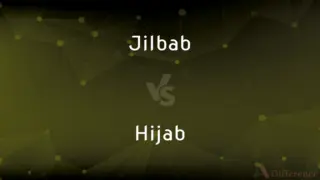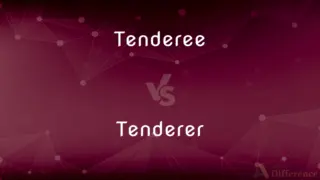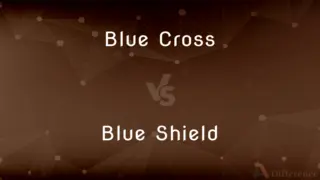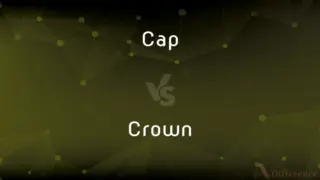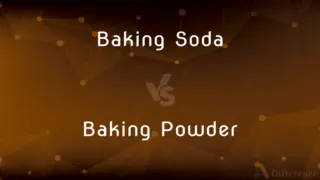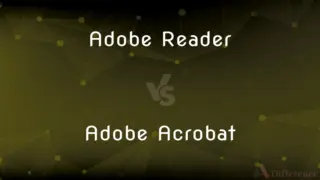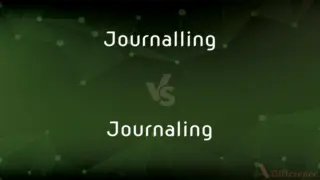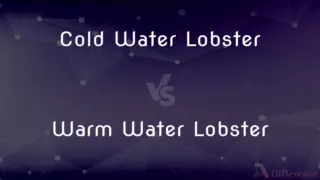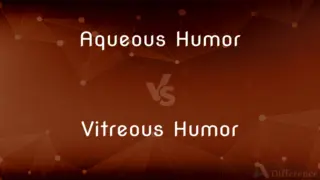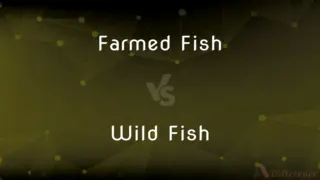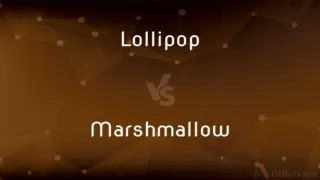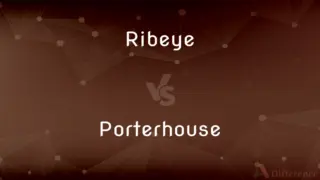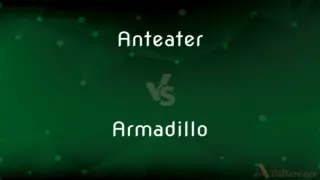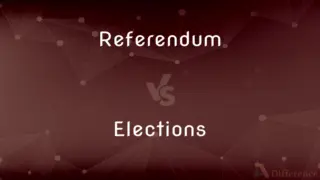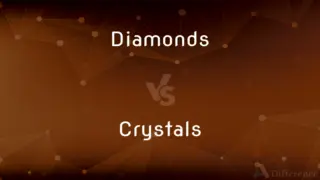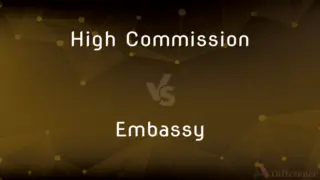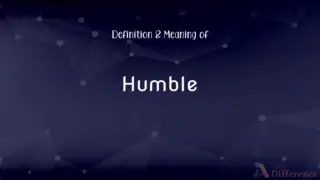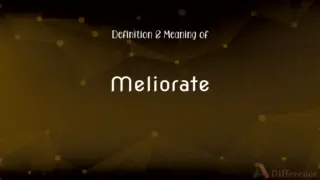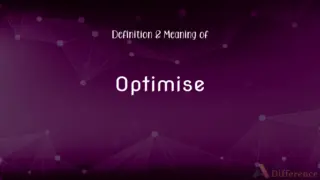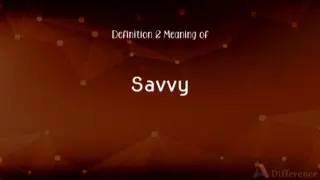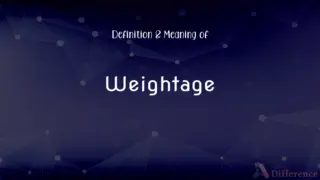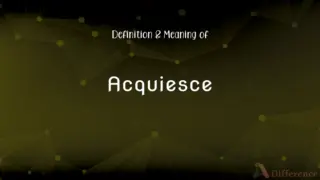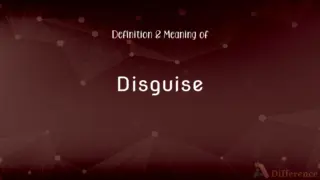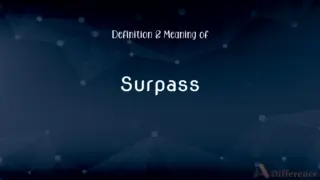Spanking vs. Whipping — What's the Difference?
By Tayyaba Rehman — Updated on January 16, 2024
Spanking is a form of punishment involving slaps on the buttocks, often with an open hand, while whipping involves striking with a whip or lash, usually more intense and painful.

Difference Between Spanking and Whipping
Table of Contents
ADVERTISEMENT
Key Differences
Spanking typically involves hitting the buttocks with an open hand, often used as a disciplinary measure, particularly for children. Whipping, in contrast, is striking with a whip or lash and is generally more severe, used either as a form of punishment or in other contexts like sports or certain cultural rituals.
Spanking is often considered a milder form of physical discipline, with the intent of correcting behavior. Whipping, on the other hand, can be quite severe and inflict more pain and potential physical harm, and historically, it has been used as a form of punishment in various judicial and institutional settings.
Spanking is generally executed with limited force, intending more to admonish rather than to cause significant physical pain. Whipping, by its nature, involves a greater degree of force and can result in welts, lacerations, and more serious injuries.
In terms of cultural perception, spanking is often viewed as a common, albeit increasingly controversial, form of child discipline. Whipping is seen as much more extreme and is largely condemned in modern society, particularly in contexts of abuse, torture, or severe punishment.
Comparison Chart
Method
Hitting with an open hand
Striking with a whip or lash
ADVERTISEMENT
Severity
Generally milder, less painful
More severe and painful
Context
Disciplinary, particularly for children
Judicial, punitive, or cultural contexts
Physical Impact
Less force, minimal physical harm
Greater force, potential for serious injury
Cultural Perception
Common form of discipline
Viewed as extreme and often condemned
Compare with Definitions
Spanking
Light Physical Punishment: Generally mild physical reprimand.
The spanking was meant as a light punishment for the mistake.
Whipping
Severe Physical Punishment: Involves using a whip or lash.
Whipping was a common form of punishment in historical times.
Spanking
Controversial Practice: Viewed differently in modern contexts.
The use of spanking as discipline is now highly controversial.
Whipping
Intense Pain Infliction: Known for causing significant pain.
The judicial system abandoned whipping due to its severity.
Spanking
Behavior Correction: Aimed at correcting behavior.
Spanking was traditionally seen as a way to correct misbehavior.
Whipping
Broad Context Usage: Used in various contexts beyond discipline.
Whipping is also practiced in certain cultural rituals.
Spanking
Open Hand Method: Involving slaps with the hand.
The parent resorted to spanking the child with an open hand.
Whipping
Historical and Judicial Context: Historically used in legal punishments.
Whipping was once a legal penalty for certain crimes.
Spanking
Spanking is a common form of corporal punishment involving the act of striking, with either the palm of the hand or an implement, the buttocks of a person to cause them physical pain. Although the term spanking broadly encompasses the use of either the hand or implement, the use of implements can also refer to the administration of more specific types of corporal punishment such as caning, paddling and slippering.
Whipping
Potential for Injury: Can cause serious physical harm.
Whipping can lead to severe injuries and lasting scars.
Spanking
A form of physical punishment in which a beating is applied to the buttocks.
Domestic spanking is often endured over the knee (or lap), formal spanking rather applied over a contraption such as a tresle or A-frame, with or without constraints
Whipping
The act of one that whips.
Spanking
An incident of such punishment, or such physical act in a non-punitive context, such as a birthday spanking.
Whipping
A thrashing administered especially as punishment.
Spanking
The act of slapping on the buttocks;
He gave the brat a good spanking
Whipping
Material, such as cord or thread, used to lash or bind parts.
Spanking
(Informal) Exceptional of its kind; remarkable.
Whipping
(countable) The punishment of being whipped.
Spanking
Swift and vigorous
A spanking pace.
Whipping
(countable) A heavy defeat; a thrashing.
Spanking
Brisk and fresh
A spanking breeze.
Whipping
(uncountable) A cooking technique in which air is incorporated into cream etc.
Spanking
Used as an intensive
A spanking clean shirt.
Whipping
(countable) A cord or thread used to lash or bind something.
Spanking
A number of slaps on the buttocks delivered in rapid succession, as for punishment.
Whipping
The lashing of the end of a rope. (FM 55-501).
Spanking
Present participle of spank
Whipping
(bookbinding) The sewing of the edges of single leaves in sections by overcasting the thread.
Spanking
Fast and energetic.
A spanking pace
Whipping
Present participle of whip
Spanking
Brisk and fresh.
A spanking breeze
Whipping
Beating with a whip or strap or rope as a form of punishment
Spanking
An intensifier.
Brand spanking new
A spanking good time
Spanking clean
Spanking white
Whipping
A sound defeat
Spanking
Moving with a quick, lively pace, or capable of so doing; dashing.
Four spanking grays ready harnessed.
Whipping
A stitch passing over an edge diagonally
Spanking
Large; considerable.
Whipping
The act of overcoming or outdoing
Spanking
Very; extremely; - used especially in the phrase spanking new or brand spanking new, meaning completely new and unused.
Whipping
Smart and fashionable;
Snappy conversation
Some sharp and whipping lines
Spanking
Quick and energetic;
A brisk walk in the park
A lively gait
A merry chase
Traveling at a rattling rate
A snappy pace
A spanking breeze
Spanking
Disciplinary Action: Used as a form of child discipline.
In some cultures, spanking is still used as a disciplinary measure.
Common Curiosities
What is spanking mainly used for?
Spanking is primarily used for disciplining children or as a metaphor for a light reprimand.
Are there alternatives to spanking for child discipline?
Yes, many experts recommend non-physical methods like time-outs, verbal guidance, and positive reinforcement.
Is whipping legal?
Whipping is illegal in many jurisdictions, especially as a form of judicial or corporal punishment.
Why is whipping considered severe?
Whipping is severe due to the intense pain it can inflict and the potential for serious physical injuries.
Is spanking effective for discipline?
The effectiveness of spanking is widely debated, with many arguing that it can have negative long-term effects.
Can spanking cause physical harm?
While generally milder, inappropriate spanking can still cause physical and psychological harm.
What are the psychological impacts of spanking on children?
Spanking can lead to increased aggression, mental health issues, and strained parent-child relationships.
Is spanking still widely practiced?
The practice of spanking varies and is decreasing, with many considering it inappropriate or harmful.
In what historical contexts was whipping used?
Whipping was historically used as a form of punishment in legal systems and as a part of certain cultural or religious practices.
How is whipping viewed in modern society?
Modern society largely views whipping as an inhumane and unacceptable form of punishment.
Has the legal status of spanking and whipping changed over time?
Yes, legal views on both practices have evolved, with many countries now imposing restrictions or outright bans.
What materials are whips made from?
Whips are typically made from materials like leather, rope, or other flexible, durable materials.
Do all countries outlaw whipping?
Most countries have outlawed whipping, especially in the context of judicial punishment, but practices vary globally.
Can spanking be considered abuse?
Spanking can cross into abuse, especially if it is excessive, causes injury, or is used inappropriately.
Are there cultural differences in the use of spanking and whipping?
Yes, cultural attitudes towards spanking and whipping vary significantly around the world.
Share Your Discovery

Previous Comparison
Scrutiny vs. Review
Next Comparison
Size vs. ScaleAuthor Spotlight
Written by
Tayyaba RehmanTayyaba Rehman is a distinguished writer, currently serving as a primary contributor to askdifference.com. As a researcher in semantics and etymology, Tayyaba's passion for the complexity of languages and their distinctions has found a perfect home on the platform. Tayyaba delves into the intricacies of language, distinguishing between commonly confused words and phrases, thereby providing clarity for readers worldwide.



